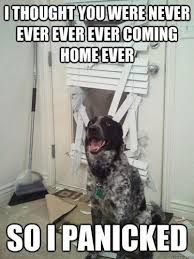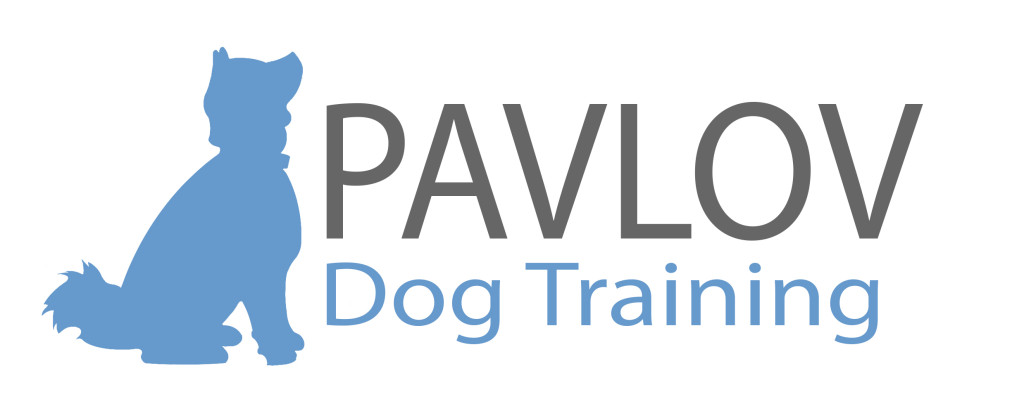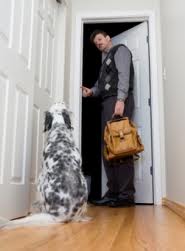2020 was tough on all of us.
Luckily, we had our dogs to get us through! However, now that things are returning to “normal” and many of us are heading out and about, there is a major trend appearing. A lot of our dogs have developed distress around being left alone!
Does your dog exhibit signs of anxiety as you grab your car keys, put on your shoes, or put on your jacket? Have you arrived home to discover your dog has chewed the door, torn blinds, or eaten the door frame?
If so, he may have a case of separation anxiety.
Some dogs acclimate to a loner-ish life style from 9am-5am, while many do not.
Think about it. Dogs, like coyotes or wolves, are innate pack animals. They are the survivors of many generations of pack animals, animals who were wholly dependent upon the pack to hunt, sleep, protect territory, fend off predators, and raise little ones.
Imagine a coyote who fancied himself an individualist, an outsider, one who bucked the system and gave a proverbial middle finger to the security of his pack in exchange for a life of solitude.

How long would this coyote survive? At what frequency would he successfully reproduce? And with no females around, what are the statistical chances he’ll pass his loner life style to the next generation?
Slim to none.
How will you know if your dog has separation anxiety? He may vocalize during your departure, destroy doorways, window sills, exits, or any threshold as a means of getting back to you. This should NOT be confused with random destruction like chewing the sofa, rummaging through trash, or eating your remote control. This is not separation anxiety, it is simply because it feels good to chew and you are not present to intercept him.
Start with the following 5 solutions:
- Keep exits & arrivals low key. Avoid melodramatic greetings. Take off your shoes and get yourself a snack before engaging with your pup.
- Mental Stimulation. Give your dog something mentally stimulating to do before you leave. Think kong wobblers or a puzzle toy or a hunk of marrow.
- Room with a view. Give him a perching place to watch passersby.
- No Crating. If your dog legitimately has separation anxiety, do not place him in a crate, as it may intensify this anxiety. You’ve just given him one more obstacle to get past in order to find you.
- Get him a Buddy. This solution is most successful with dogs who bond with other dogs. Before committing to a new family member, consider fostering a dog from your local human society. The more compatible your dog is with the other dog, the greater your chances at success.
- Consider medications. Begin with over-the-counter options like Rescue Remedy or CBD, but don’t be opposed to enlisting the help of a veterinarian. Set the intention to not leave your dog medicated forever, but rather, to use medication as a way to help your dog retain the training that you will be investing in to solve the issue.
- Hire a Pro. Unfortunately, separation anxiety is one of the harder behavioral issues to mitigate. Many dog trainers take months or years to try and help you solve the issue, often to no avail. There are techniques, however, that have been proven effective to help. Be sure to ask, when researching dog trainers, what their success rate is (and what “success” means to them) before investing.
PAVLOV offers help to people and dogs struggling with separation issues. Reach out to us and we will chat with you over the phone to see if we are a good fit.


